Struggling Against Tyranny: The Gertrude Goldhaber Collection
“The vicious cycle which was originally created by the overt exclusion of women from mathematics and science must be broken… [I]t is of the utmost importance to give a girl at a very early age the conviction that girls are capable of becoming scientists.”
Gertrude Scharff Goldhaber (1911-1998) was a German Jewish nuclear physicist who made several significant discoveries in physics, particularly in the field of nuclear structure, and was deeply involved in expanding access and opportunities for women in science and encouraging science education at all levels. Dr. Goldhaber’s papers have recently been arranged and described by archivists at the Center for Jewish History, thanks to support from the American Institute of Physics. Her archival papers, held by the Leo Baeck Institute at the Center for Jewish History, will soon be open for research.
Gertrude Goldhaber was a student of experimental and theoretical physics, mathematics, and chemistry as an undergraduate, and was completing her PhD in physics at the University of Munich when Hitler came to power in 1933. She said that she felt ostracized by many members of the physics department, but she decided to stay and finish her dissertation with the support of her thesis advisor, Walther Gerlach.
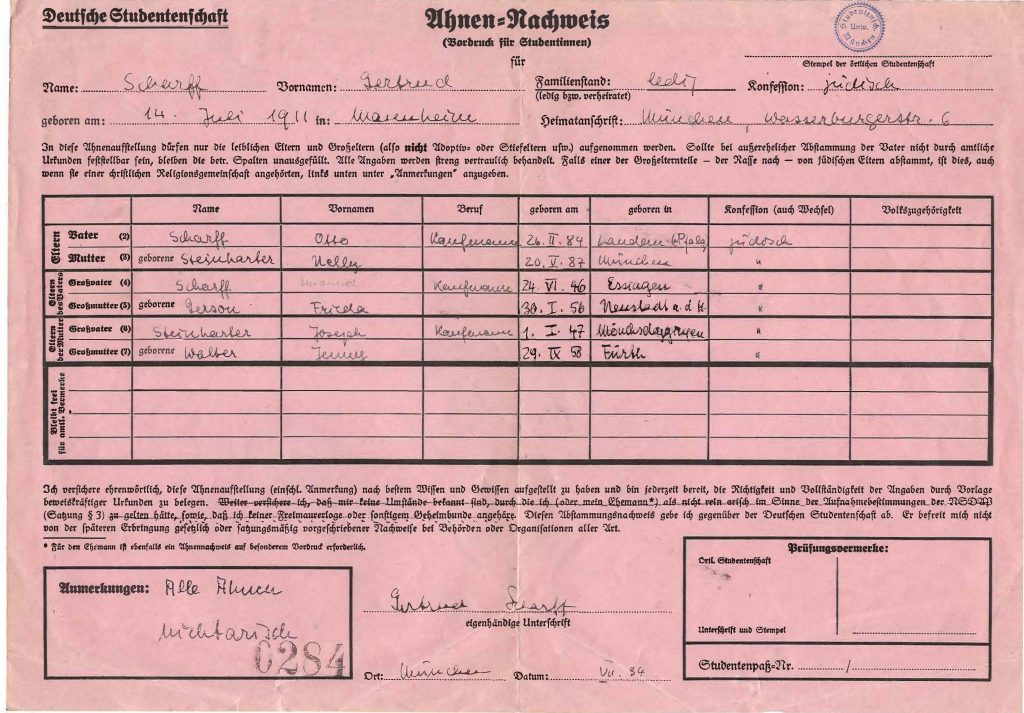
She completed her PhD in experimental physics at the University of Munich in 1935, then moved to England where she did post-doctoral work in particle physics at the University of London’s Imperial College in George Paget Thomson’s laboratory.

Gertrude married Maurice Goldhaber in May 1939 and then joined him in Illinois, where he was teaching at the University of Illinois in Urbana.
Gertrude’s parents, Otto and Nelly Scharff, left Germany for Switzerland in 1933 but ultimately returned to Munich, where they remained until November 1941. Nelly Scharff sent several letters to Gertrude in late 1940-1941, and while they do mention the war and various attempts to get out of Germany by her parents and their friends and family, these letters are also quite casual. Her mother shares personal news, talks about the weather, asks about everyone’s health, and thanks Gertrude for sending a picture of her new baby, Alfred.
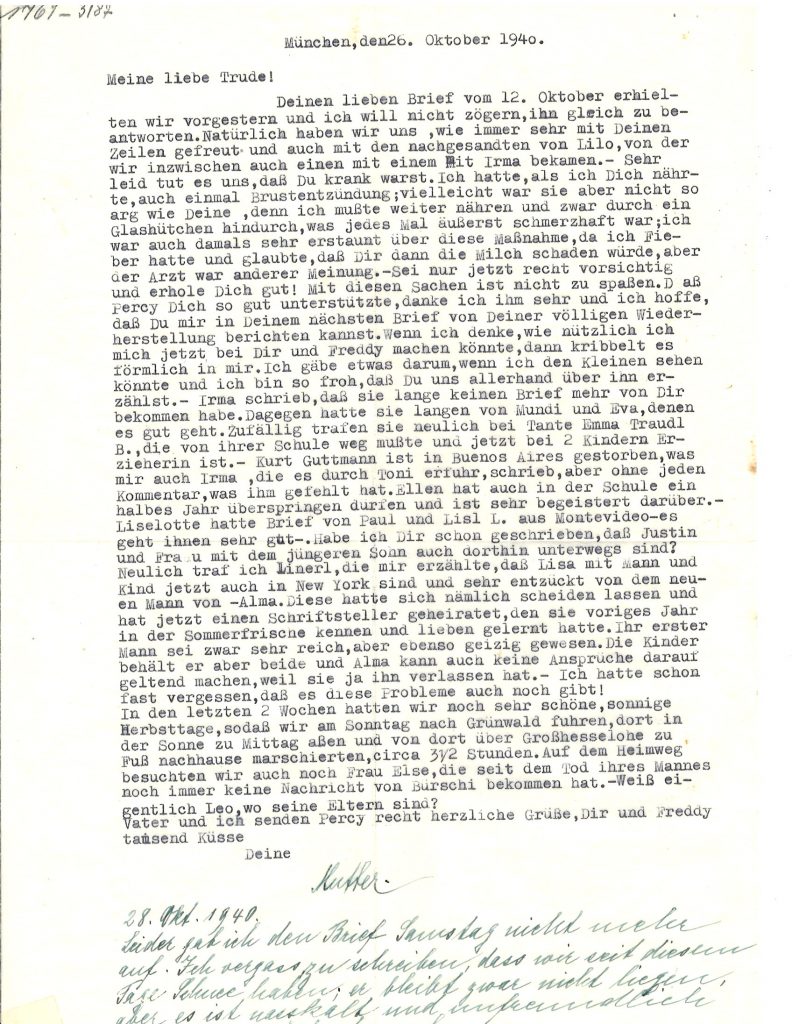
On November 20, 1941 the Scharffs were deported to Kaunus, Lithuania, where they perished five days later.
While in Illinois, Dr. Goldhaber was not allowed to receive a salary or to have her own laboratory space, due to strict anti-nepotism laws. She worked as an unpaid assistant in her husband’s nuclear physics laboratory doing experimental physics work. In 1942, she discovered that spontaneous nuclear fission is accompanied by the release of neutrons, although this discovery was kept secret until 1946, after World War II had ended.
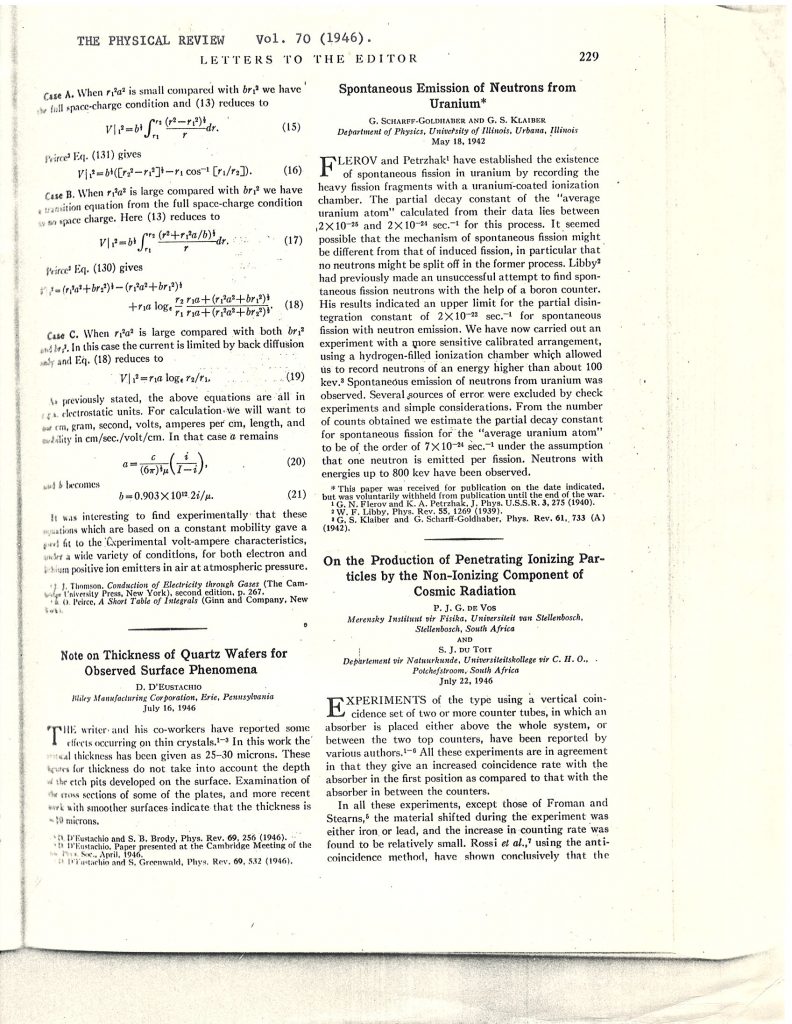
Gertrude was elected as a fellow of the American Physical Society in 1947, and in 1948, the Goldhabers together confirmed the identity of beta rays with atomic electrons. In 1950, the family moved to Long Island, where both Gertrude and Maurice had positions at the Brookhaven National Laboratory. Gertrude was the first woman with a PhD to join Brookhaven’s scientific staff.
Dr. Goldhaber believed deeply in promoting science education for all students, as well as members of the non-scientific public, and early-career researchers, particularly girls and women. She was an American Physical Society councilor and chair of its panel on Pre-College Physics Education, brought children, students, and members of the public to visit the Brookhaven labs, founded a training institute for local science and mathematics teachers on Long Island in 1958, and started the Brookhaven Lecture Series in 1960, which brought together scientists from different departments to share their work. Dr. Goldhaber was also especially committed to advancing the roles of women in science. Dr. Goldhaber sat on the National Research Council’s Committee on the Education and Employment of Women in Science and Engineering (CEEWISE) and was a member of the American Physical Society’s Committee on the Status of Women in Physics.
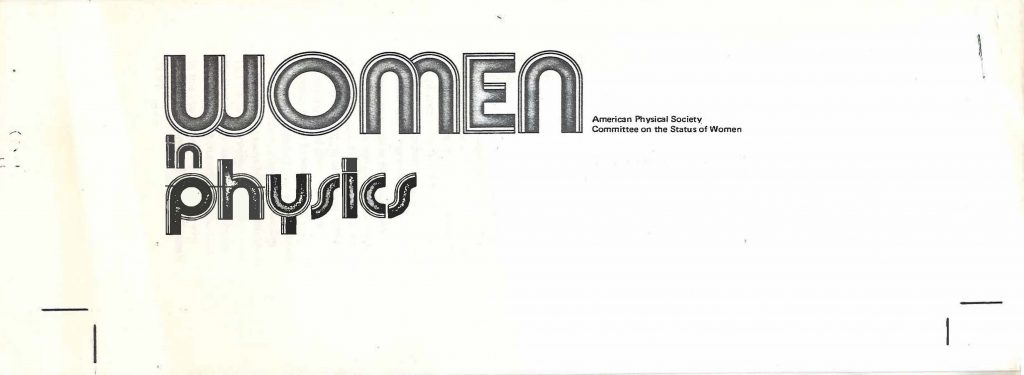
In 1979, she co-founded Brookhaven Women in Science (BWIS), and in 1972 was the third female physicist elected to the National Academy of Sciences.
Among the numerous letters of congratulations for Dr. Goldhaber’s election to the NAS are those from other eminent scientists and physicists. Several of the letters and Dr. Goldhaber’s responses to them mention how important Gertrude’s membership in NAS could be for all women scientists.
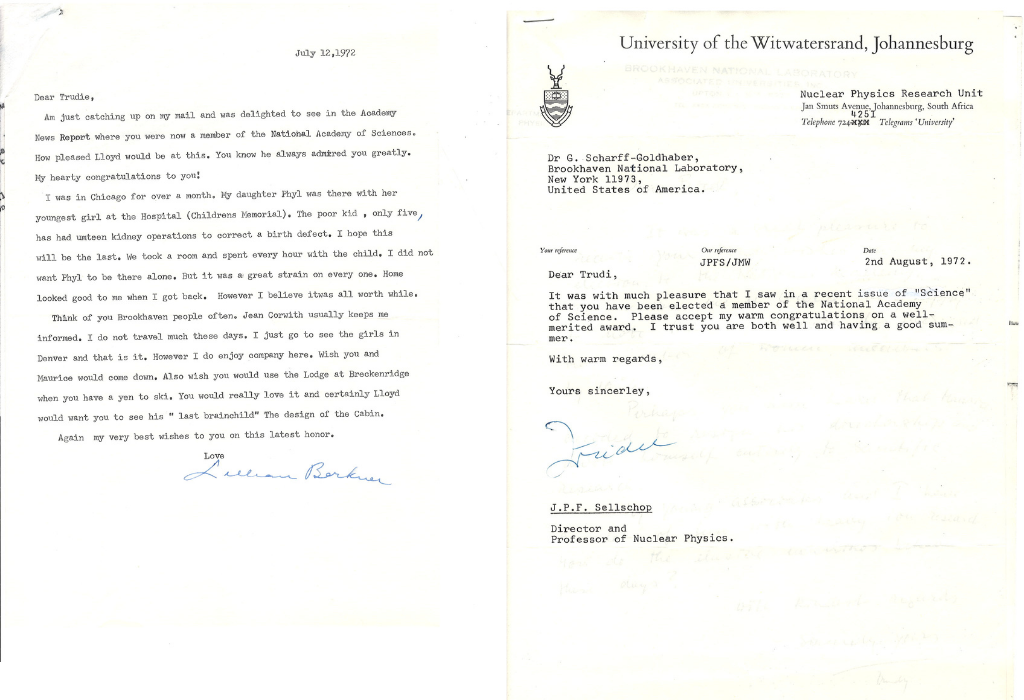
In 2021, the Center for Jewish History received a grant from the American Institute of Physics to process and make available the Gertrude S. Goldhaber Collection (AR 25820 A), which is a part of the Maurice and Gertrude Goldhaber Collection (AR 25820). The collection contains personal and professional papers, correspondence, research files, manuscripts and published materials, as well as photographs, charts, and diagrams. For additional information, see the guide to the collection and the press release on the grant project and Dr. Goldhaber.
Rachel Harrison, Archivist, Center for Jewish History


